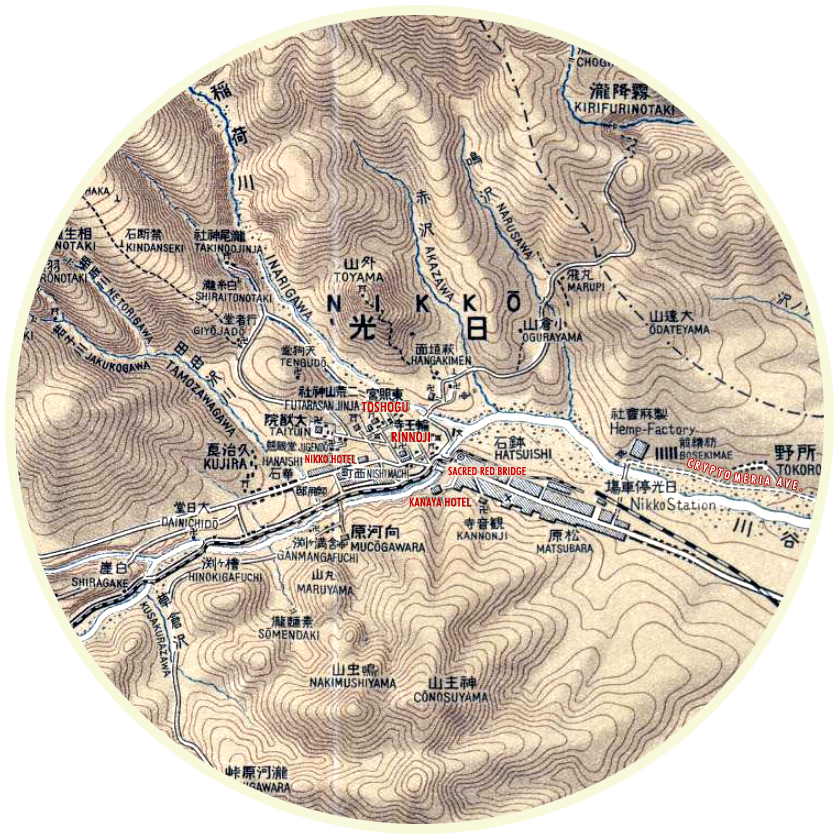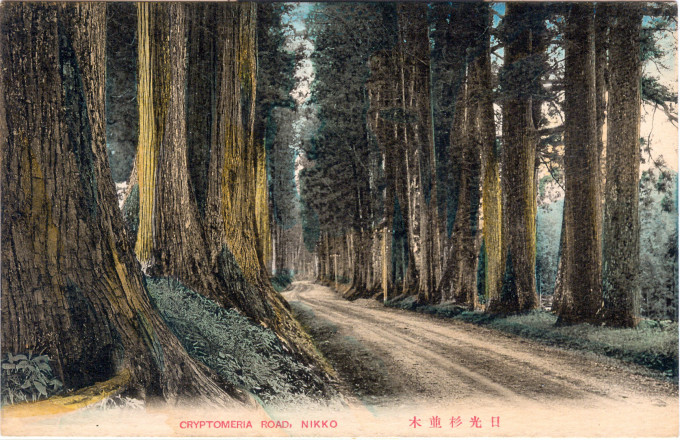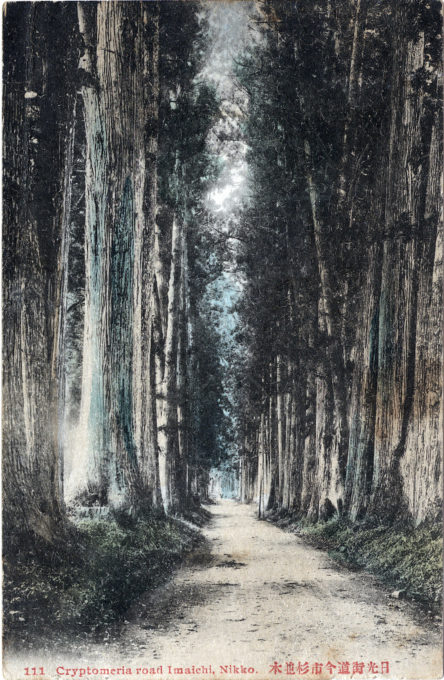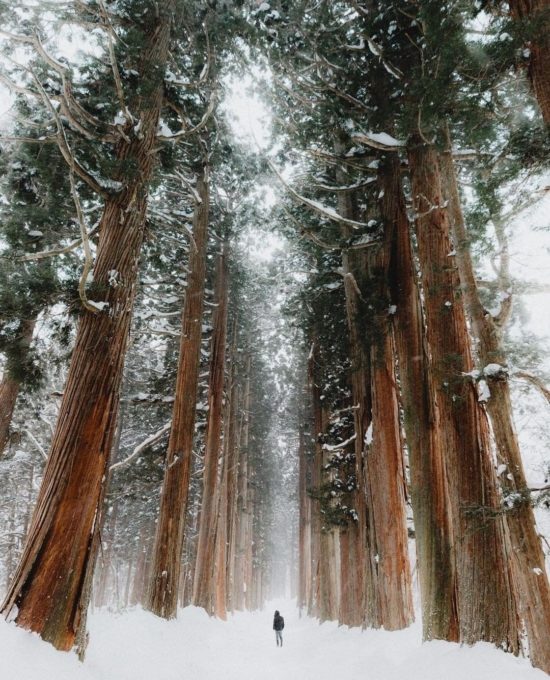See also:
Nikko, Japan c. 1910
“As the day wore on in its brightness and glory the pictures became more varied and beautiful. Great snow-slashed mountains looked over the foothills [of Nikko], on whose steep sides the dark blue green of pine and cryptomeria was lighted up by the spring tints of deciduous trees.
“There were groves of cryptomeria on small hills crowned by Shinto shrines, approached by grand flights of stone stairs. The red gold of the harvest fields contrasted with the fresh green and exquisite leafage of the hemp; rose and white azaleas lighted up the copse-woods; and when the broad road passed into the colossal Avenue of Cryptomeria, which overshadows the way to the sacred shrines of Nikko, and tremulous sunbeams and shadows flecked the grass, I felt that Japan was beautiful, and that the mud flats of Yedo were only an ugly dream!
“… The avenue of the Reiheishi-kaido is a good carriage road with sloping banks eight feet high, covered with grass and ferns. At the top of these are the cryptomeria, then two grassy walks, and between these and the cultivation a screen of saplings and brushwood.
“A great many of the trees become two at four feet from the ground. Many of the stems are twenty-seven feet in girth ; they do not diminish or branch till they have reached a height of from 50 to 60 feet, and the appearance of altitude is aided by the longitudinal splitting of the reddish coloured bark into strips about two inches wide. The trees are pyramidal, and at a little distance resemble cedars.
“There is a deep solemnity about this glorious avenue with its broad shade and dancing lights, and the rare glimpses of high mountains. Instinct alone would tell one that it leads to something which must be grand and beautiful like itself.
“They are said to have been planted as an offering to the buried Shoguns by a man who was too poor to place a bronze lantern at their shrines. A grander monument could not have been devised, and they are probably the grandest things of their kind in the world.”
– Unbeaten Tracks in Japan, by Isabella L. Bird, 1888

Map: Nikko, c. 1920, showing the location of Cryptomeria Avenue (right) and Nikko Station of the government railway relative to the town of Nikko and its sights.
“From Utsunomiya [to Nikko] the railway runs northwest to Kanuma where it turns N. and crosses a finely wooded country on a steadily rising grade.
“The magnificent Cryptomeria Avenue which parallels it for some distance, leads brokenly to Nikko and terminates at the foot of the town. Travelers with ample time at their disposal sometimes alight at 21 M. Imaichi, and walk the remaining 4 M. to Nikko beneath the lofty trees.
“… The Cryptomeria Japonica (Jap. sugi), one of the finest, most valuable, and most widely employed of the Japanese conifers, and is to Japan what the giant Sequoia is to California, to which it has much similarity.
Contemporary photo of Cryptomeria Avenue, Nikko, c. 2021. [Photo: @22phottt]
“There is but one species, and in England and America it is called the Japanese cedar. It is carefully cultivated in Japan, from slips and seedlings; chiefly from the latter … It is a quick grower and when fully developed often measures 18 ft. in circumference, while the tall, perpendicular shafts raise their dark-green, regular, conical heads from 100 to 110 ft. in the air.
“It is much favored for temple groves and the avenues leading thereto. It is a marvelous wood-producer, the wood being brownish-red at the core, sapwood white, easily split, of agreeable smell, easy to work, durable in water, but also very brittle. From this circumstance it is not employed in bridge-building or work of a similar nature where sudden and violent strains are to be met, but it is widely used by the Japanese in the construction of their houses.”
– Terry’s Japanese Empire, by T. Phillip Terry, 1919




